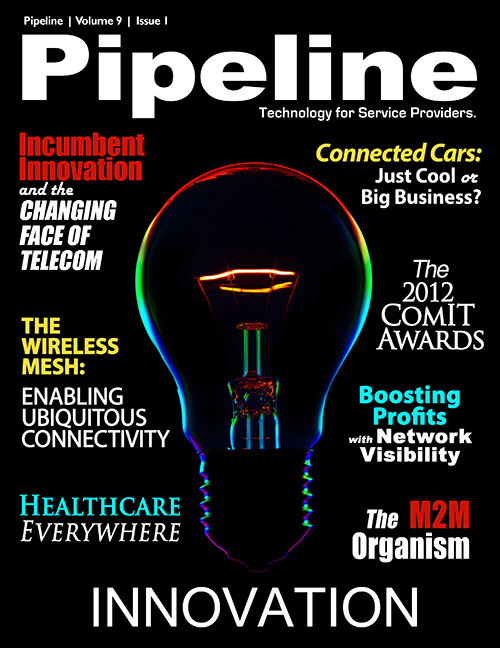Incumbent Innovation: Changing the Face of Telecom
Leveraging Devices in New Ways
Other innovations may not be crucial components of the future of the organizations, as a whole, but are undeniably cool. “The one I really like is some of our future media services,” said Whitely. “We are working on technology that allows someone on their iPad to communicate and interact, for example, with their kids at home using video conferencing, high definition voice and interactive apps. So a parent who is away for the evening can see, talk and interact with their kids in real time all while reading their bedtime stories. It’s very cool and what’s more, uses technology we have now and that people understand and can relate to.”
Body Language
Sometimes even the most practical research leads to new technologies that tend toward the fanciful, but change the way that people interact with their devices and, by extension, the network and the world around them. For example, while working on smartphone sensors, the T-Labs developed a “gesture based device interaction model based on influencing the embedded compass sensor using a regular piece of magnet taken in fingers,” says Arnold. “This extends the interaction space beyond physical boundaries of the device in a natural flexible manner,” and “allows the interaction using the space all around the device even at the back or when the device is covered.”
Odds and Ends
AT&T Labs, likewise, has been doing work on a range of offerings designed to make life easier and more enjoyable via cloud-based services and innovative interfaces. The solutions, highlighted in a recent showcase include a bio-acoustic door lock, a car alert system that lets you know when you’ve forgotten an item, and “Air Graffiti”, which allows users to tag a location with information, memories, music, and more.
Verizon Wireless, meanwhile, makes sure that its Innovation Center work isn’t limited to serious business like utilities and education (though these are important verticals for the carrier). The wireless giant also works to enable a good time in its work with companies like jukebox player TouchTunes. Through its work with the VZW Innovation Centers, TouchTunes has not only figured out ways to ensure broadband connectivity in its nearly 50,000 locations, but has figured out ways to integrate app controls and photo sharing to enhance the end user experience. And Verizon Wireless notes that there are plenty more applications in the pipeline. “It’s early days,” said Lewis.Changing Faces
In all of these examples, from the most serious to the most trivial, we see major incumbents bringing significant R&D resources to bear on problems and opportunities that face subscribers today. These efforts are proof that even major incumbent carriers aren’t unaware that the industry is changing. In fact, in some cases they are driving the change themselves.
If history is an indication of the future, the story of each major incumbent CSP is one of near-constant change. Telegraph gave way to telephone. Video and wireless became mainstays of the communications landscape. Business models changed. Through the years and as evidenced by their continued commitment to innovation, CSPs are proving that they are dedicated to staying at the forefront of the next generation of communications and entertainment services and helping shape the face of thing to come.


















